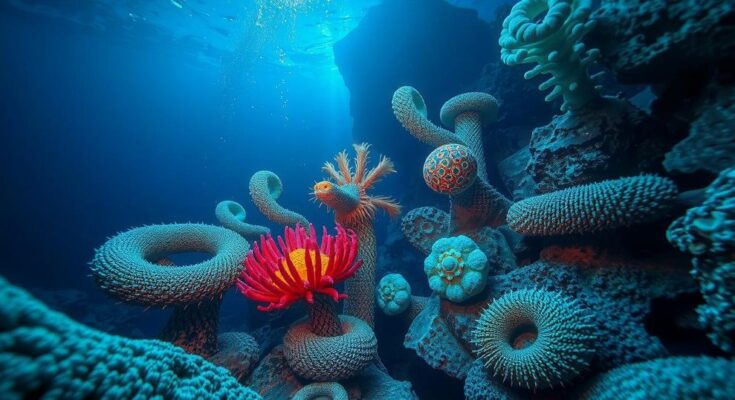An international research team identified nearly 500 deep-sea species in Costa Rica’s methane seeps, the highest biodiversity count recorded in such environments. Of these, at least 58 are considered new to science. The decade-long study involved extensive fieldwork and collaborative efforts, providing valuable resources for future biodiversity research and highlighting the ecological significance of these ecosystems.
Recent explorations at Costa Rica’s methane seeps have unveiled an astonishing biodiversity of nearly 500 distinct deep-sea species. This groundbreaking discovery, documented over a decade-long project led by the Scripps Institution of Oceanography in collaboration with local institutions, is recognized as the highest biodiversity count recorded in a single seep or vent region. Among the identified species, at least 58 are entirely new to science, while most of the remaining species had not been previously documented.
The research, spanning from 2009 to 2019, involved five expeditions and 63 submersible dives that collected specimens, photographs, and DNA sequences important for cataloging these unique ecosystems. Key findings indicate that only 131 of the documented species had been formally described before this study, leaving 299 species in a state of taxonomic uncertainty, suggesting additional undiscovered life forms in these methane-rich environments. This diverse marine life thrives in the chemosynthetic environment established by methane bubbles from the seafloor, nourishing a myriad of organisms.
Furthermore, this study stands as a critical resource for future marine biodiversity research, education, and conservation efforts. “We hope this information-rich, freely available resource will strengthen deep-sea biodiversity research, education, and conservation, as well as set a high scientific standard to inspire similarly comprehensive studies from other parts of the world,” stated Charlotte Seid, the lead author of the study.
Beyond Costa Rica, recent expeditions off the coast of Chile have also revealed significant biodiversity, potentially uncovering 60 new species, thereby reflecting the ongoing exploration potential of methane seeps across different regions. The funding for the study originated from grants by the National Science Foundation, with additional support from the Schmidt Ocean Institute, highlighting the collaborative effort in advancing our understanding of these crucial marine ecosystems.
In conclusion, the comprehensive study conducted on Costa Rica’s methane seeps highlights the remarkable biodiversity present in deep-sea habitats. With a count of 488 species, including numerous new findings, this research underscores the importance of continued exploration and conservation in understanding marine ecosystems. The collaborative effort ultimately aims to inspire further studies and awareness of deep-sea biodiversity.
Original Source: oceanographicmagazine.com




